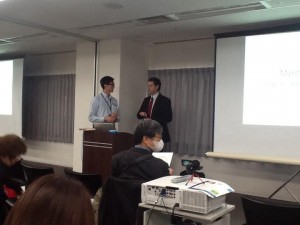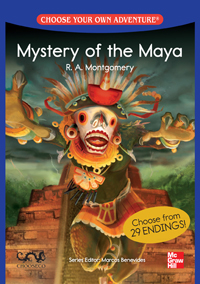Reviews page
New year, new features
Happy New Year!
The eagle-eyed among my visitors may have noticed the shiny new ‘pages’ menu in the top right-hand corner of the site. You’ll find all the reviews I have done gathered there, and I aim to add to them more regularly in 2014. I hope you find it useful.
Please feel free to add your comments or questions.
conference curriculum elllo extensive listening extensive reading graded readers language courses Language learning materials online resources presentations self-study
by sendaiben
2 comments
Oxford Day 2013 video, slides, and writeup
I was extremely lucky to be invited to speak at the first Oxford Day in Japan this month.
I wasn’t really sure what to expect, but I really enjoyed the whole thing. 188 teachers attended, and there were nine presentations (five time slots). The venue was a very comfortable meeting space in Shibuya, and the provided coffee and sandwiches were excellent.
Most importantly for me, I had a fantastic group of teachers in my presentation who were very forgiving and asked me a bunch of questions at the end. Here is a copy of my slides in .pdf format and the video of the presentation is below:
131123 Maximising Input (slides in .pdf format)
If you have any questions please let me know in the comments, or send me an email to sendaiben@gmail.com.
curriculum EFL extensive reading graded readers language courses Language learning materials readers Reading teaching university
by sendaiben
6 comments
Choose Your Own Adventure readers -in class!
Today I am going to introduce a new activity I have been doing with extensive reading classes here at Tohoku University this semester. Our ER classes consist of approximately 45 minutes of silent reading and 45 minutes of supplementary activities including speaking, listening, and writing.
One activity that students enjoyed was reading some of the Choose Your Own Adventure readers in groups (I got the idea from Marcos Benevides).
Background Info
The Choose Your Own Adventure books (CYOA from now on) were popular when I was in school. They consist of books where the reader is given choices and the story develops differently based on those choices, up until an ending is reached. Some endings are good and some are bad. It’s kind of like a computer or role-playing game.
The CYOA readers are published by McGraw-Hill Education, and consist of 30 titles over three levels (500, 700, and 900 headwords). I used this in-class reading activity twice, once with Mystery of the Maya, and once with Cup of Death. Both are at the 500 headword level.
Procedure
The activity takes 30-35 minutes. First, introduce the concept of gamebooks to the students and walk them through the ‘read a page, decide on a course of action, go to the next page’ dynamic.
Assign the students to random groups (we found pairs and groups of three work best, as larger groups mean each student has too little to do). Explain that each group member will in turn read a page, the group will make the decision, and the book will be passed to the next member. This will continue until an ending is reached. If groups finish early they should go back and try to get another ending.
The teacher then reads the first page to the class before distributing one book to each group. Once a group has their book, they can start.
Results
We did this activity twice with about a dozen classes. Students actively read, listened, and discussed options for the whole time the activity went on. Many students enjoyed the activity and were clearly happy when teachers introduced the second book (three weeks after the first one). The highly structured nature of the activity makes it easy for students to participate.
Evaluation
This is a great activity to do two or three times a semester. It would be possible to base an entire course around reading CYOA books, but I suspect the novelty might wear off. Of course, as with any activity, not all students enjoyed it to the same extent. In terms of materials, one class set can be shared among several teachers.
The best thing about this activity is that it really brings out the meaning in the books: students have to understand the text in order to choose their next action.
Improvements
1. The content of each book in the CYOA series varies considerably. Our students had some trouble with the Mayan setting, so it might have been useful to pre-teach some of the background, the geography, and the history. This could be done in a few minutes. Going through the proper nouns in the book would also help students read more smoothly.
2. Doing the exercise in pairs gives more reading/speaking time to each student.
3. It is not necessary to have class sets of each book: the same activity could be done with each group/pair reading a different book (of course, pre-teaching and having the teacher read the first page would not be possible in this case). This would allow students to choose which book they wanted to read, possibly making it more interesting for them.
Conclusion
This was a very positive experience for my colleague and I, and for the students. It is likely to become a regular activity in our ER classes.
conference extensive reading graded readers Language learning presentations Reading
by sendaiben
4 comments
Readability (and the lack of it) in graded readers
At the JALT Pan-SIG conference a few weeks ago (my favourite conference in Japan) I attended two extremely thought-provoking lectures, back to back. Both of them were talking about something very similar, something that has also been coming up in conversations with students this week.
The topic was readability of graded readers, or why some books are easier to read than others.
Marcos Benevides has a great blog post outlining the content of his talk. It’s well worth taking a few minutes to read that now.
Amanda Gillis-Furutaka, from Kyoto Sangyo University, talked about her fascinating research into the specific problems students have when reading English text. Her findings were echoed by my students when I talked to them about their reading in extensive reading classes this week. If you have the chance to attend one of her presentations on this topic at JALT or elsewhere, please consider doing so.
So what makes books difficult for students (focusing on students reading texts up to around 1000 headwords, ie beginner to lower-intermediate readers)? In short, the following:
-number of characters (the more characters the harder it is to understand the story)
-the complexity of the language (modal verbs and allegory are a real barrier to understanding)
-literary devices such as changing between different perspectives, changing from the present to the past suddenly, or unexpected plot twists
While these insights are perhaps most useful to authors and publishers, they can also help teachers recommend books for students (and know which books to put off until later!). Really interesting stuff, and I’m looking forward to reading Ms Gillis-Furutaka’s research when she publishes it.
conference curriculum expectations extensive reading graded readers language courses presentations school management university
by sendaiben
5 comments
Student Reactions to Extensive Reading (Pan-SIG 2013)
I was at the Pan-SIG conference this weekend, held in Nagoya (the excellent Nanzan University hosted the event). This is the video of my presentation (a little shorter than usual):
Thanks to everyone who attended.



